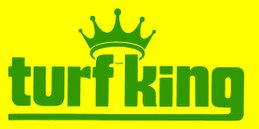Saturday, August 20, 2011
Colourful Edible Landscape
www.hamiltonturfking.ca
Turf King Hamilton Halton Haldimand
905.318.6677
Wednesday, August 17, 2011
Lawn is still Brown
i am one of your customers, and am a little disappointed in the results of my lawn. it has a large brown patch. we seed the area regulary as suggested by your company, however the lawn is still brown. we have been told we have cinch bugs, however the lawn doesn't seem to get better. Is there anything we can do to improve the situation ? My neighbours do nothing to their lawns, but they seem to be greener then mine.
==============================================================================
John
Friday, August 12, 2011
Animals Digging in the August Lawn
Several people have called about animals digging in their lawns the past couple of weeks. They say the lawn has been torn up and has holes in it. Many times they will call and say that they think they have grubs.
At this time of year, it is still a bit early for white grubs.
If I ask them what the holes look like, most people describe it as a neat hole about the size of a golf ball. The ones I have seen are nicely cleaned out with not dirt crumbs to be seen. These holes an 1 1/2 inches around are an indication of leatherjackets.
While it is possible to see white grubs at this time of year, generally they are very small. This indicates that they are very recently hatched. Skunks and raccoons are harvesting leatherjackets right now because the leatherjackets are at what I call their pre-Thanksgiving size. Just like turkeys are harvested just before Thanksgiving, so the animals are harvesting the leatherjackets when they are at their largest size.
The baby white grubs are not worth digging for. Let them feed on the lawn for a few weeks- we can come back later when they have put on some fat.
Leatherjackets are the larvae of the adult Crane Fly.
At this stage, we don't recommend treatment. The leatherjackets are not feeding or damaging lawns. They will soon pupate and turn into adults. The adult Crane Fly looks like a giant mosquito. They don't hang around very long. They mate and the females lay eggs.
If you see a multitude of the adults, then a control application this fall or next spring may be worthwhile. This treatment is done once the eggs have hatched into larvae. The adult is hard to treat since it is a flying insect. Insect eggs are hard to control. The larvae are the easiest stage to control.
Think positive. The animals are getting rid of the leatherjackets, so that's a plus. Just put a bit of soil and some grass seed in the holes.
Friday, August 5, 2011
Hand Pulling Crabgrass
With this summer's hot temperatures and dry conditions, Lawns are being attacked all over by hordes of crabgrass.
With Ontario's Cosmetic Pesticide Ban, post emergent crabgrass treatments for this time of year are no longer available (or legal) to control crabgrass.
Hand pulling is the only choice.
This can be a tedious chore.
Is it worth doing?
We look after 2 different Burlington condo sites on the same street. Last year, one condo decided to pay some young people to hand pull the crabgrass along the walkways. The second condo decided that they couldn't afford to do the hand pulling.
This week, when our lawn technician was on the 2 sites, he reported that the first condo had a lot less crabgrass than the second one.
Although we treated both with the organic crabgrass reduction product this spring, the difference in the amount of crabgrass at this time of year is likely due to the hand pulling that was done last year.
The good thing about crabgrass is that it will die when we get a good frost. The bad part is that the produce so many seeds.
Make sure to pull the crabgrass before it goes to seed. Crabgrass plants are capable of producing thousands of seed.
Try to pull the crabgrass after a rain. When there is some soil moisture, the crabgrass will pull up much easier.
www.lawncarehalton.com
www.lawncareancaster.com
www.hamiltonturfking.ca
Turf King Hamilton Halton Haldimand
905.318.6677


